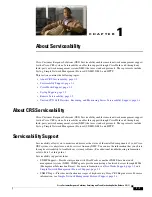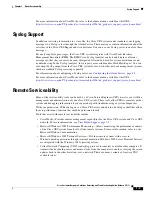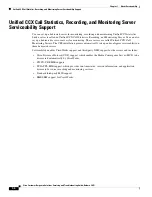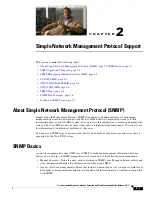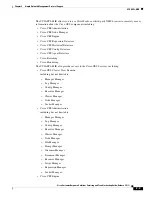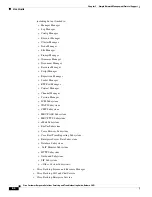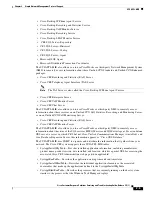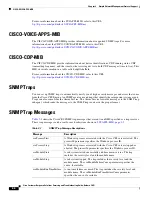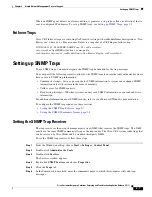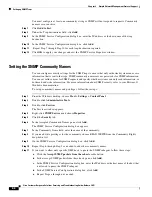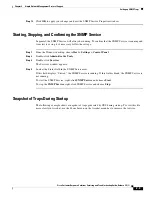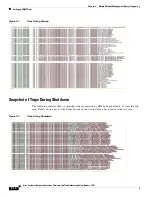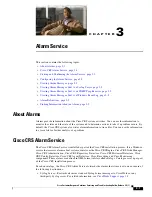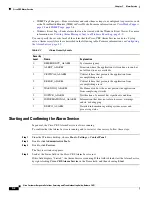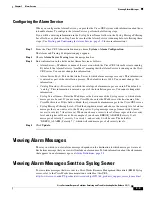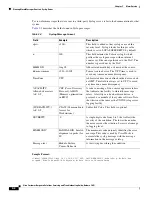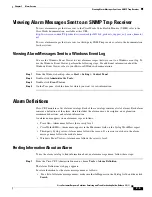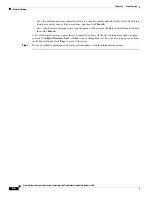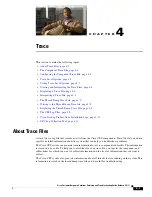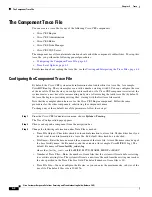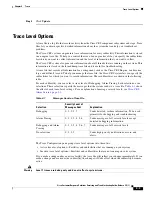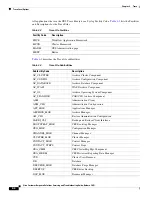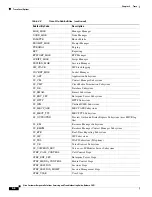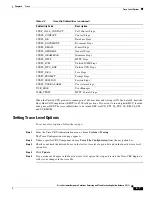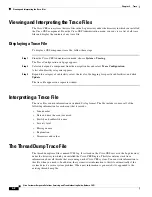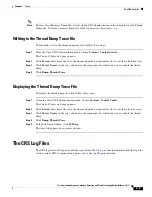
C H A P T E R
3-1
Cisco Customer Response Solutions Servicing and Troubleshooting Guide, Release 5.0(1)
3
Alarm Service
This section contains the following topics:
•
About Alarms, page 3-1
•
Cisco CRS Alarm Service, page 3-1
•
Starting and Confirming the Alarm Service, page 3-2
•
Configuring the Alarm Service, page 3-3
•
Viewing Alarm Messages, page 3-3
•
Viewing Alarm Messages Sent to a Syslog Server, page 3-3
•
Viewing Alarm Messages Sent to an SNMP Trap Receiver, page 3-5
•
Viewing Alarm Messages Sent to a Windows Event Log, page 3-5
•
Alarm Definitions, page 3-5
•
Finding Information About an Alarm, page 3-5
About Alarms
Alarms provide information about the Cisco CRS system activities. You can use this information to
monitor the status and the state of the system and to determine actions to take if a problem occurs. By
default, the Cisco CRS system also writes alarm information to trace files. You can use the information
in a trace file for further analysis of a problem.
Cisco CRS Alarm Service
The Cisco CRS Alarm Service is installed as part of the Cisco CRS installation process. It is a Windows
service that receives alarms about system events from the Cisco CRS Engine, Cisco CRS Node Manager,
Cisco CRS Administration, Cisco CRS Repository Datastore, Cisco CRS Historical Datastore, Cisco
CRS Config Datastore, Cisco CRS Agent Datastore, Cisco Recording, and Cisco Monitoring
components. These alarms are defined in XML format in files called catalogs. Catalogs are set up as part
of the Cisco CRS installation process.
Based on catalogs, the Cisco CRS Alarm Service forwards the alarms that it receives to one or more of
the following destinations:
•
Syslog Server—Forwards alarms as standard Syslog-format messages to CiscoWorks or any
third-party Syslog server. For related information, see
CiscoWorks Support, page 1-2
.
Summary of Contents for Cisco Unified Queue Manager
Page 21: ...P A R T I Serviceability ...
Page 22: ......
Page 61: ...P A R T I I Troubleshooting ...
Page 62: ......

